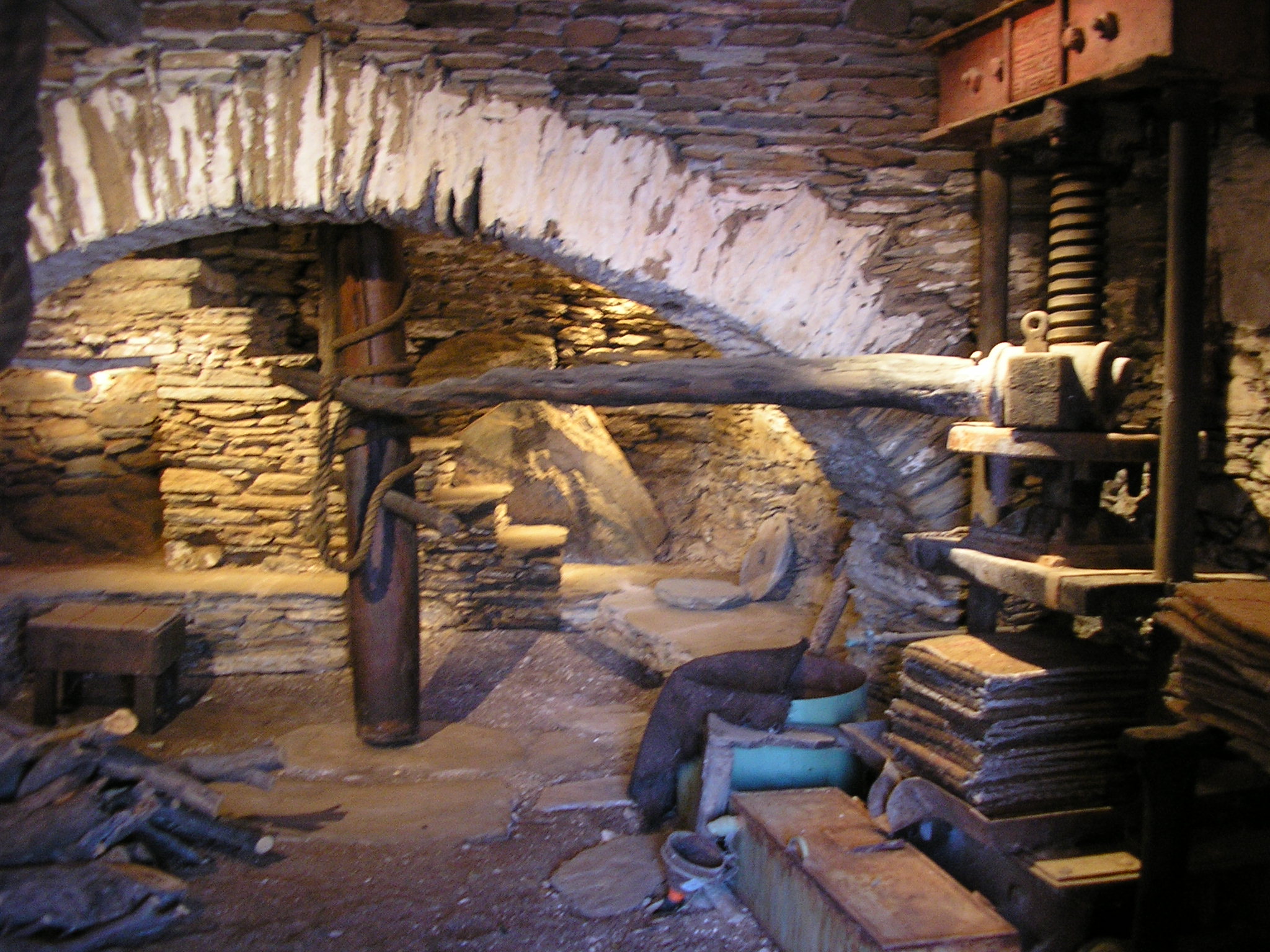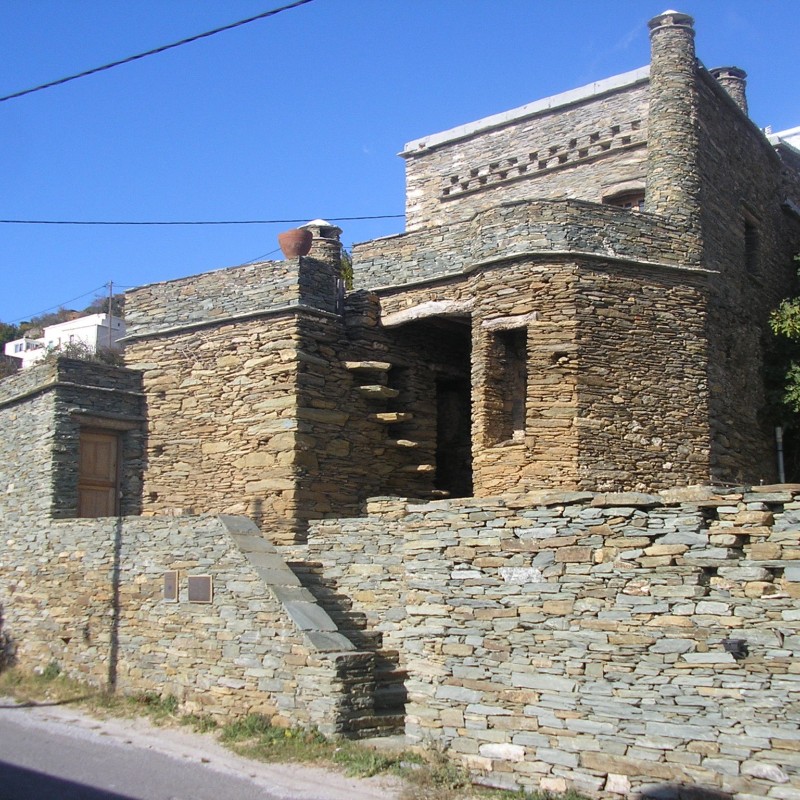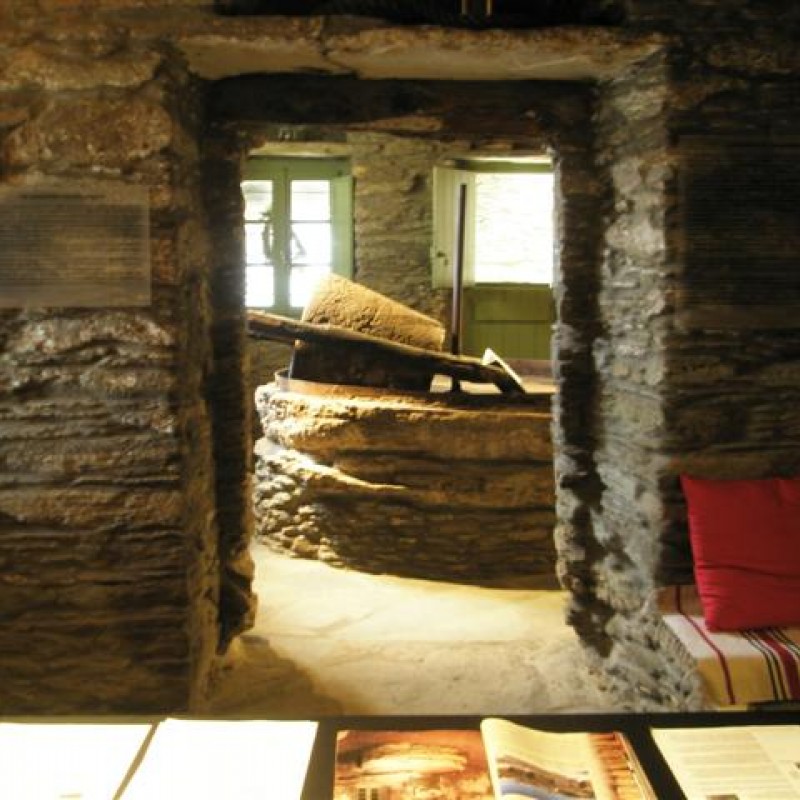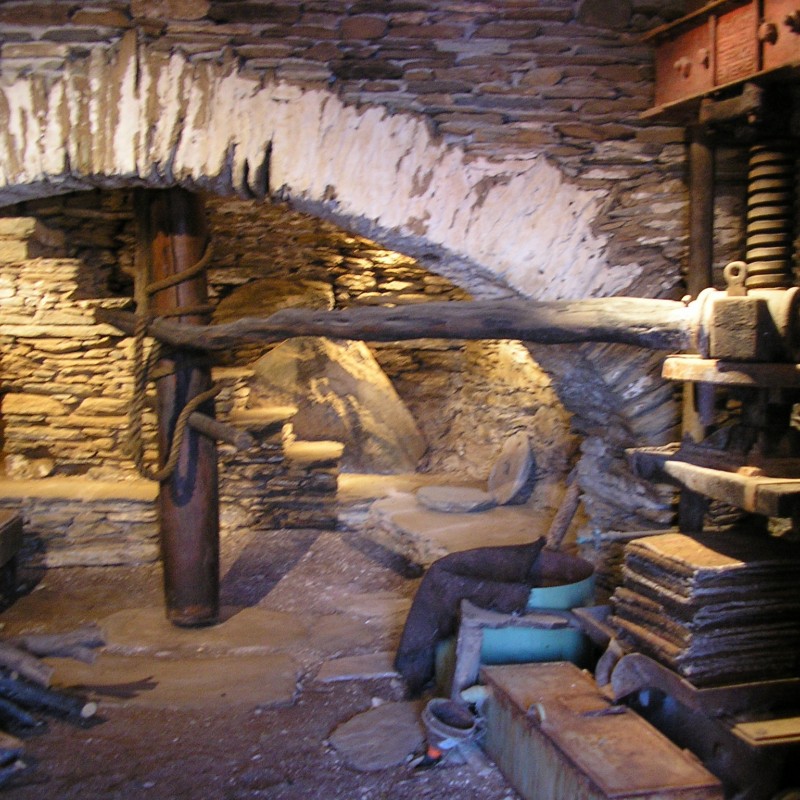Cyclades Olive Museum
Ano Pitrofos, Andros, 84500, Greece
| Former Use: | Olive oil mill |  |
| New Use: | Pre-industrial museum | |
| Category: | Industrial Museum | |
| Website: | http://www.musioelias.gr/en/node/25 | |
| Reuse Architect: | Dimitris Chelmis (civil engineer) | |
| Construction year(s): | 1800 - | |
| Reuse year(s): | 2000 - |
Description:
The olive mill in Pitrofos, also known as the Pitrofos "vida" takes up most of the ground floor ("katogi") of a two storey stone building. The upper floor is used as the owner's home.
The mill is a fine example of a small, pre-industrial, animal powered olive oil production unit. Its facade and internal stonework have been beautifully restored, preserving all the important original features that are typical of Cycladic island architecture and agriculture of the period.
The mill also has some unusual features. In most olive mills on Andros the whole production process was carried out in one small room. In contrast, the Pitrofos mill was separated into a number of different rooms where different stages of the process were carried out.
In the village, the house was also known as the "Bishop's House" or "Despotiko" in Greek, as the Bishop ("Despotis") of Varna (now a city in Bulgaria), who had originated from Pitrofos, returned there in 1823 to spend the last years of his life. The building dates back much earlier than 1823. Various preserved elements, such as three mill stones, two stone milling-plates, and other structural details, prove that it was operational during the 18th century. Moreover, in 1857 it was re-sold, together with the upper floor home, as a complete oil mill. With a well looked after facade and inner stonework, it presents interesting architectural elements, such as arches, domes, etc, common in rural Andros and generally characterizing the architectural functionality in Cycladic islands. (2)


